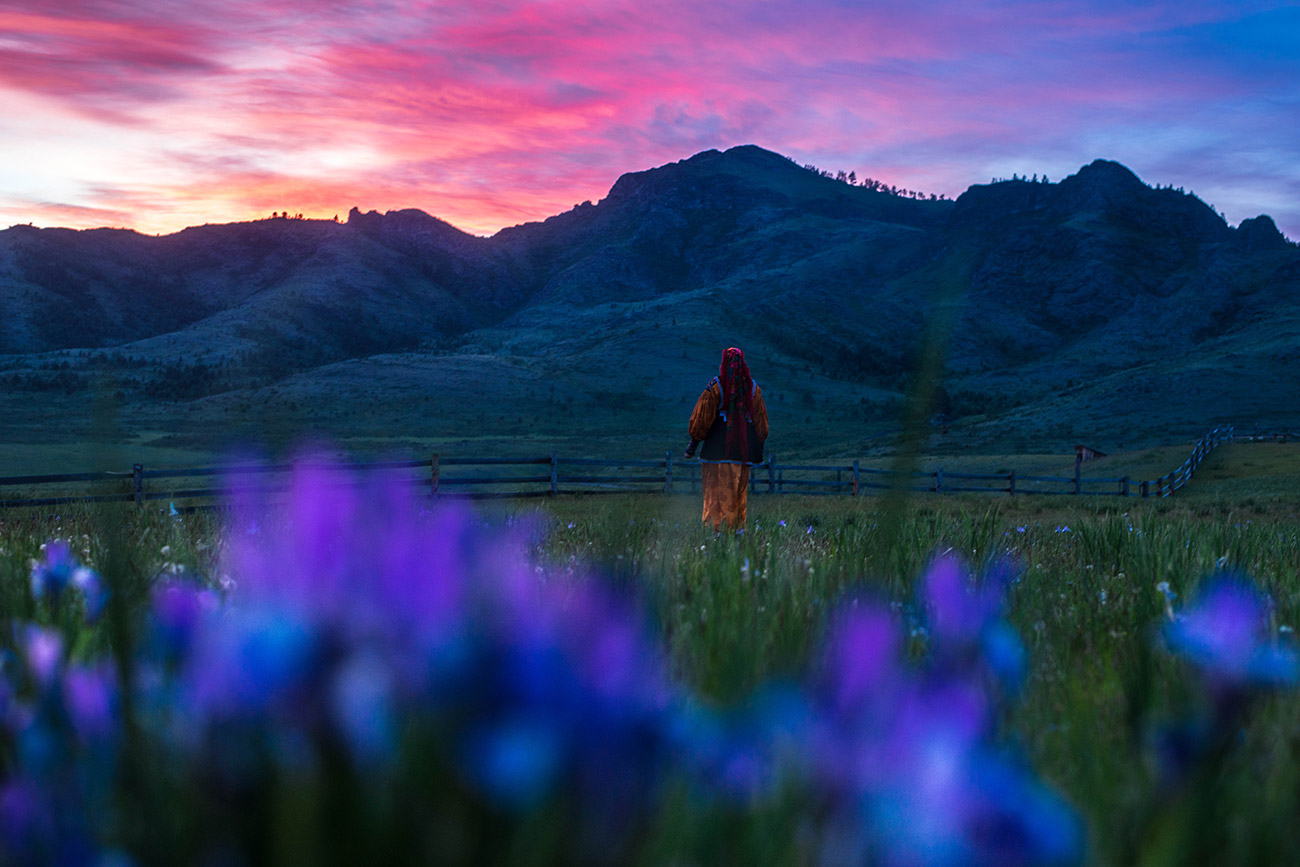
The adventure begins! If you still think that Siberia is a backwater with bad roads and brown bears hiding in every bush, look at this road in the Tyumen Region, where the Ishim River flows.
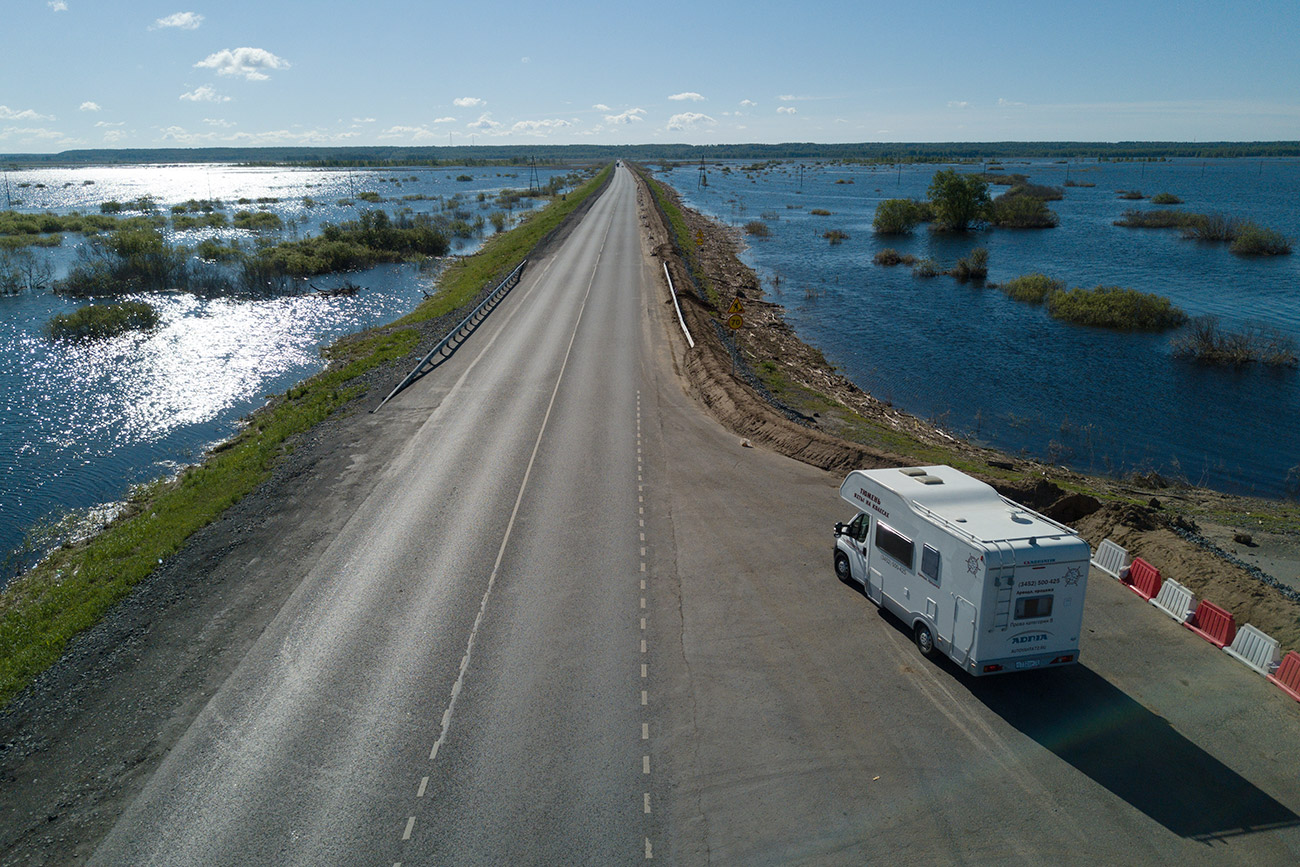 Photo credit: Maxim Tarasov
Photo credit: Maxim Tarasov
The destination is a handful of yurts scattered on the plain between the spurs of the Kuznetsk Alatau range, or the museum complex ‘Khakassky Aal.’ Back in the 19th century the large indigenous families of the nomadic Khakas shepherds lived in the similar structures in the southern Siberia. You can stay overnight in the museum yurt.
 Photo credit Maxim Tarasov
Photo credit Maxim Tarasov
The locals asked the photographer Maxim Tarasov to find their lost horse with the help of his drone’s camera and here is what he captured:
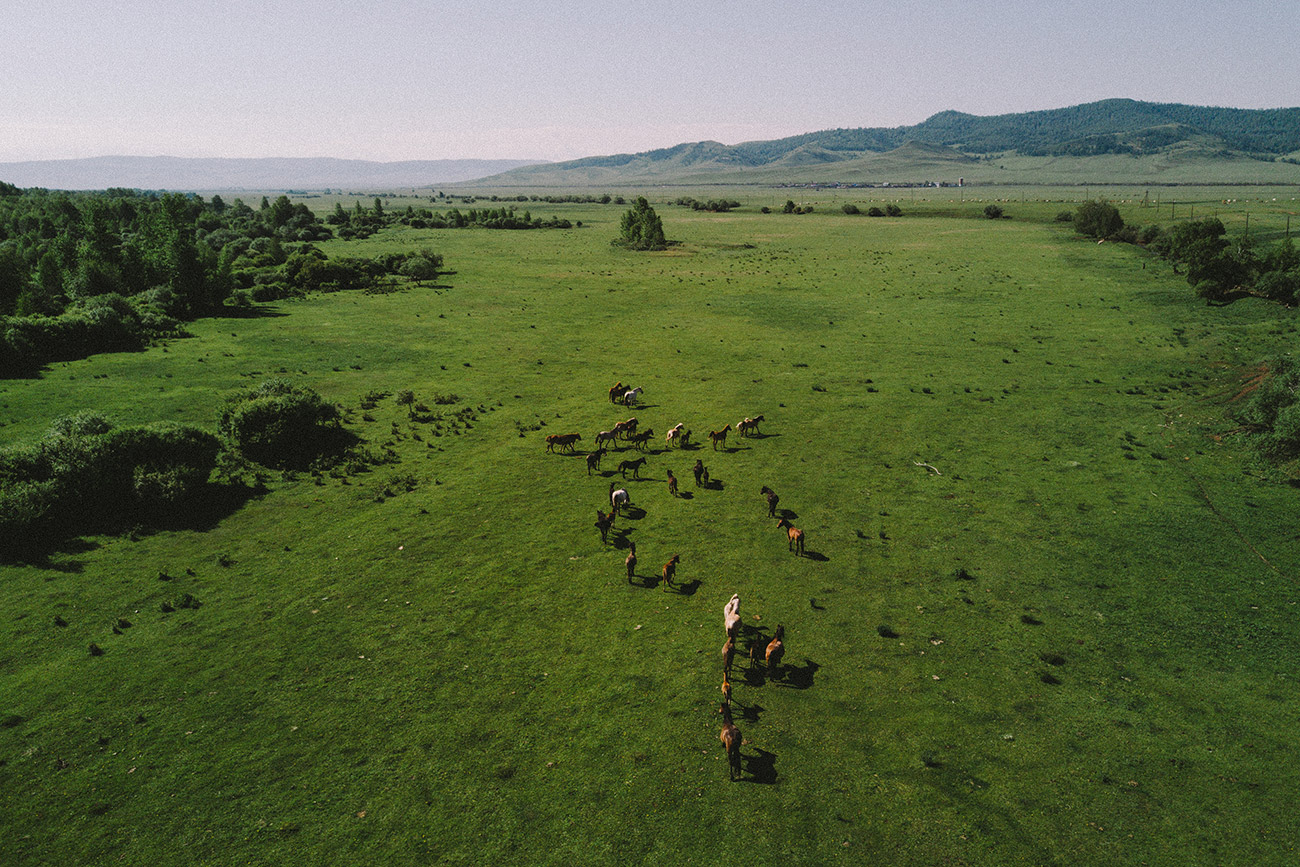 Photo credit: Maxim Tarasov
Photo credit: Maxim Tarasov
Girls wearing traditional Khakas costumes greet the tourists. The Khakas people dressed like this until the 1950s when they eventually switched to the European-looking clothing. Modern Khakas wear traditional costumes to family celebrations and national holidays - the Tun Prayram festival of the first ayran and the Khakassian new year Chyl Pazy.
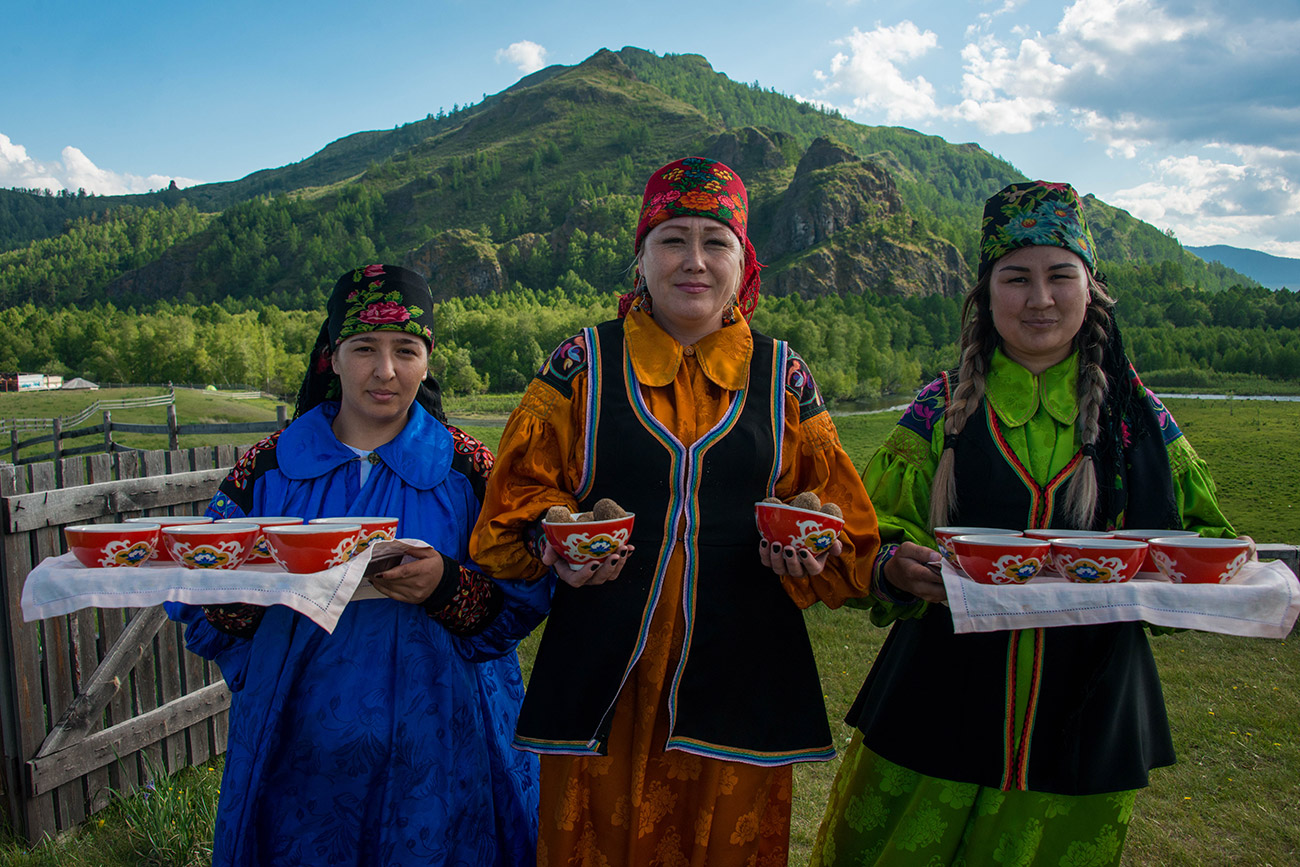 Photo credit: Tatiana Zhukova
Photo credit: Tatiana Zhukova
Summer heat already reigns in the Altaian lands in June: Surprisingly, the mountain river that looked chilly turned out to be very warm.
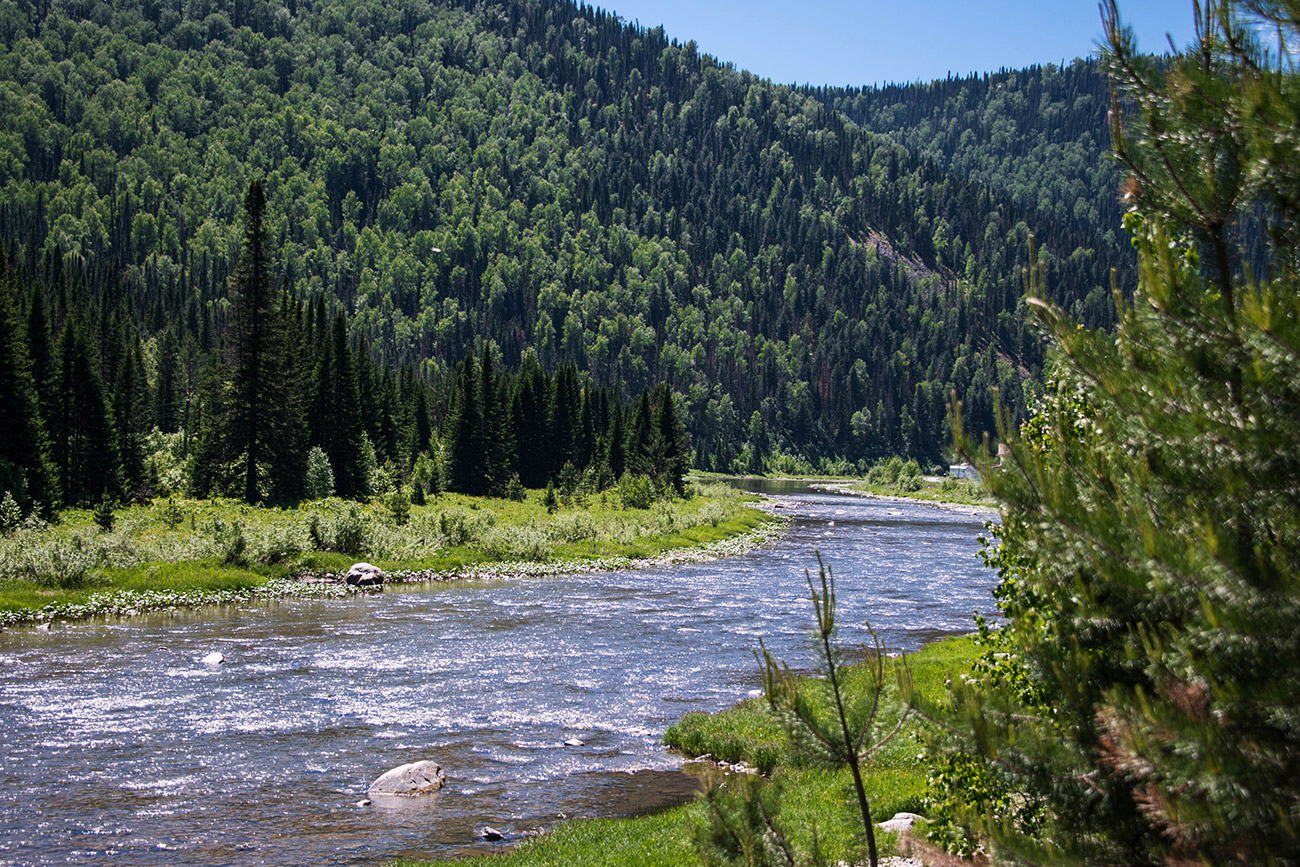 Photo credit: Tatiana Zhukova
Photo credit: Tatiana Zhukova
400 years ago, an indigenous Turkic people, the telesy nomadic cattle-breeders, inhabited the shores of the Teletskoye Lake in Altai. Their descendants – the Altaians – live here today.
Tourist routes to the Altai Mountains pass through Teletskoye Lake. The path along the lake begins in the local village of Artybash and leads to the Chulyshman river valley, the Stone Mushrooms (Kamennye griby) and the 160-meter high cascade waterfall Uchar, the largest in Altai.
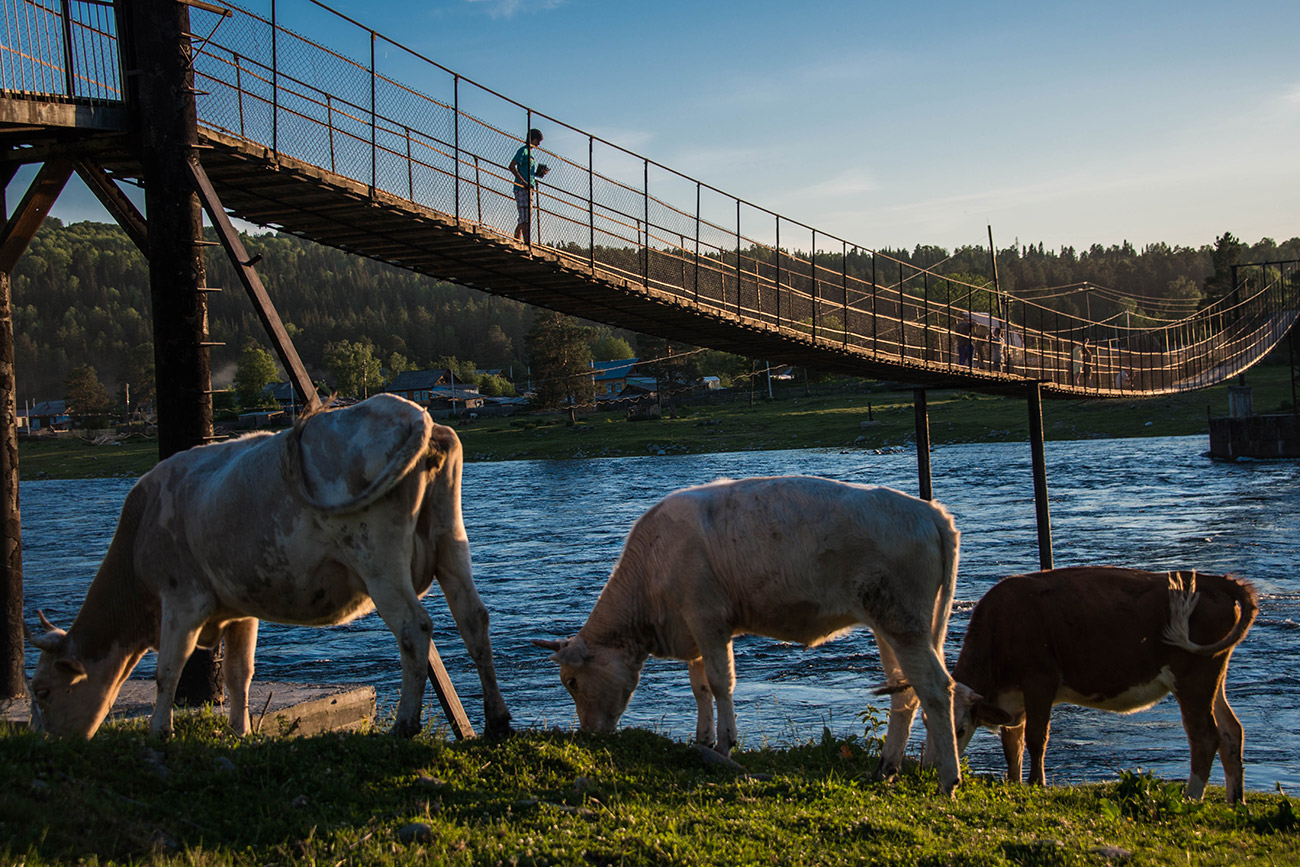 Photo credit: Tatiana Zhukova
Photo credit: Tatiana Zhukova
A friendly local four-legged guide can give you a tour around the lake.
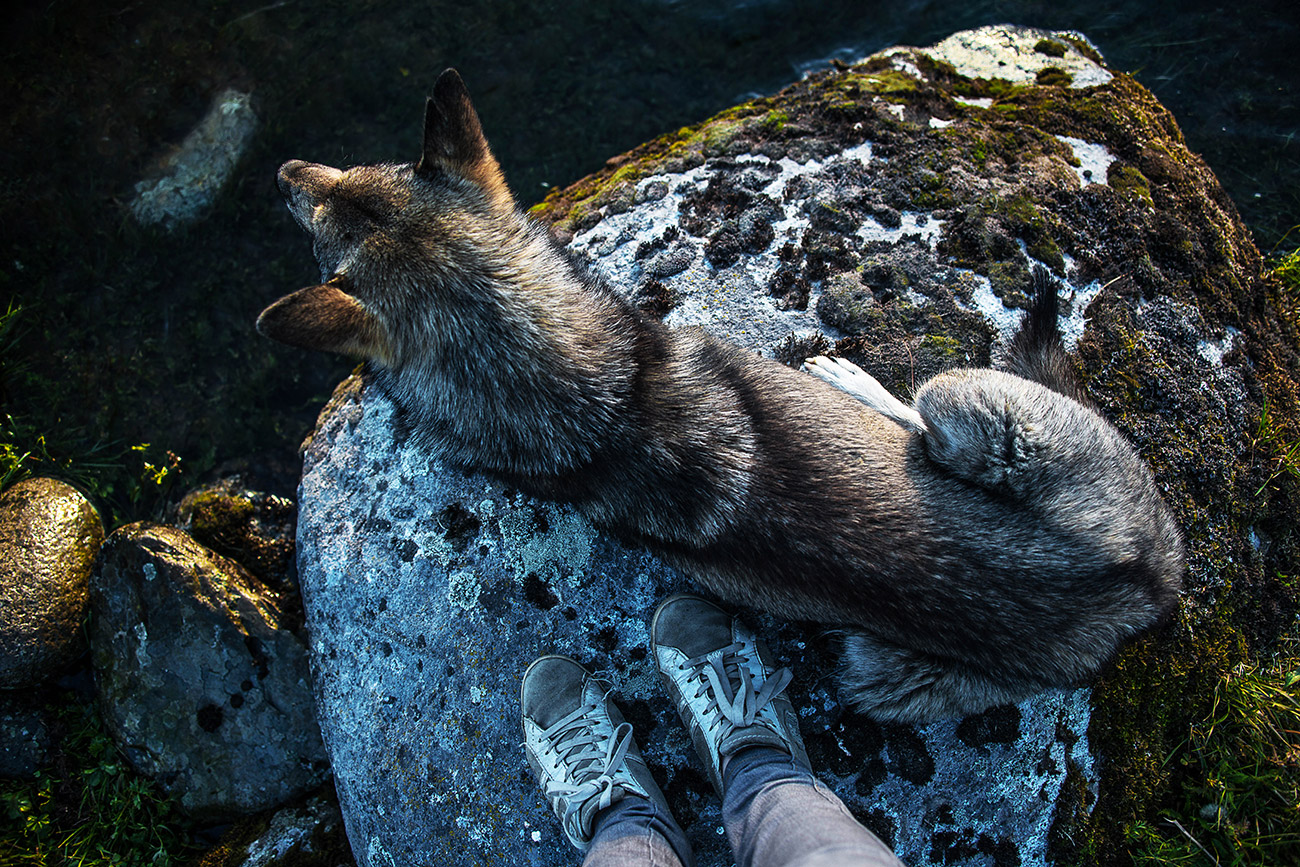 Photo credit: Tatiana Zhukova
Photo credit: Tatiana Zhukova
A Shor Shaman performs a ritual. The Shors, whose ancestors were known throughout Siberia for their skills in smelting iron, believe that the world is divided into three spheres: the sky, or Ulhi ger; the middle world, or Orti ger, and the land of evil spirits, Aina ger. People live in the middle world, and the shamans use fire to communicate with the other ‘spheres.’ In order for the spirits to treat the shaman favorably, offerings are made to the spirits – delicious sweets and tasty slices of bread.
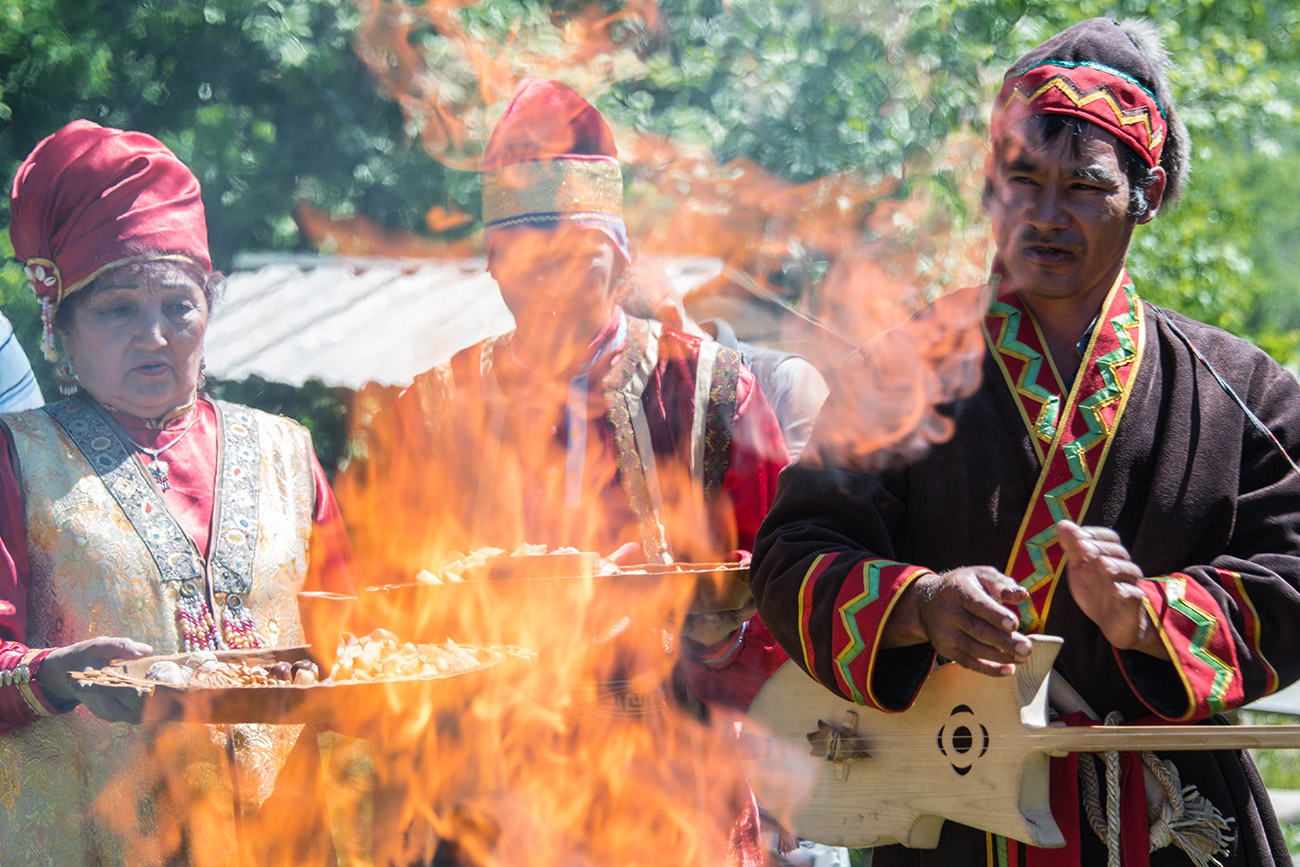 Photo credit: Tatiana Zhukova
Photo credit: Tatiana Zhukova
The ‘Mistress of the Taiga’ statue by Dashi Namdakov is the symbol of the Mountain Shoria land, which is located at the junction of Altai, the Sayan and the Kuznetsk Alatau Mountains. The fire burns in the statue’s cup, and the elk's horns are decorated with solar symbols and images of fertility, stylized as a rock painting.
 Photo credit: Tatiana Zhukova
Photo credit: Tatiana Zhukova
One of the centers of tourism and recreation in the Altai Region is Lake Teletskoye, which is included in the UNESCO World Heritage List as a part of the Golden Mountains of Altai. The locals call Teletskoye Lake ‘Baikal's younger brother’: While it’s not as deep as Baikal, the water here is every bit as good as Baikal’s – when it reaches its maximum transparency in February, it allows you to see to a depth of up to 15.5 meters.
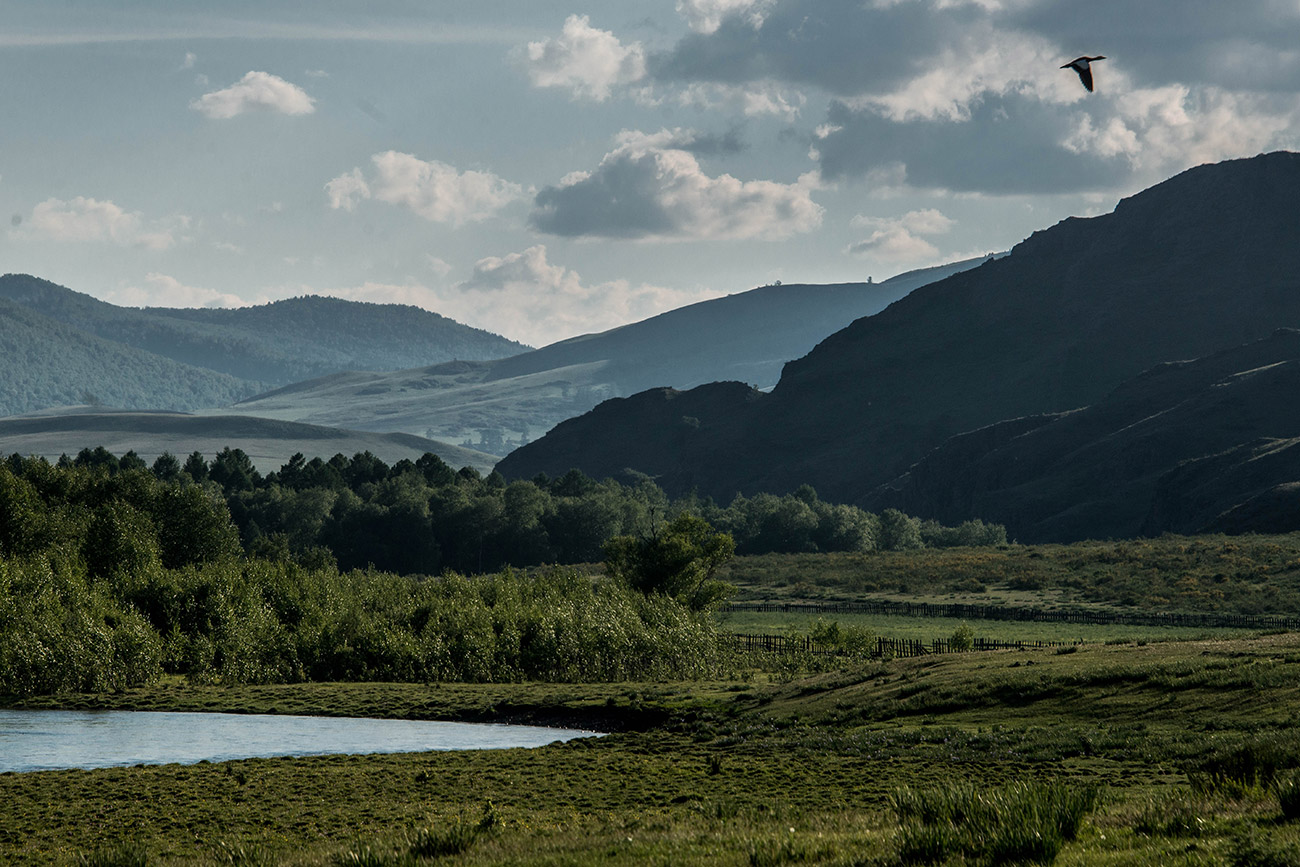 Photo credit: Tatiana Zhukova
Photo credit: Tatiana Zhukova
If using any of Russia Beyond's content, partly or in full, always provide an active hyperlink to the original material.
Subscribe
to our newsletter!
Get the week's best stories straight to your inbox